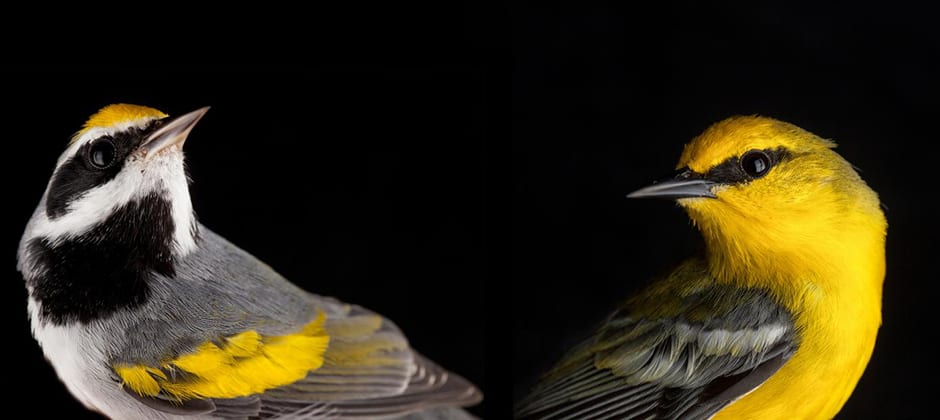Share this article
Genes play a role in warbler migration
For golden-winged and blue-winged warblers, where they go when they migrate south is in their genes, researchers found.
“These small songbirds don’t really have a trainer or a navigator,” said David Toews, an assistant professor of biology at Penn State who led an open-access study on the birds published in the Proceedings of the National Academy of Sciences. “On their first migration, they usually go alone and at night, so how do they know where they’re going?”
“The birds travel so far that hundreds of years ago, people thought maybe they were just hibernating at the bottom of the lake during winter,” Toews said. But now, since researchers know they’re actually making epic migrations from the northeastern U.S. to wintering grounds in Central and South America, Toews, along with colleagues from the University of Toledo, Cornell University and the University of Colorado, wanted to know what adaptations allow them to do so.
The team captured both bird species at their breeding grounds in the U.S., and placed geolocators on them, which allowed researchers to decipher their longitude and latitude throughout their migration. They also collected blood samples to conduct genetic work later.
After catching the birds the following breeding season and collecting the geolocators, the team found golden-winged warblers (Vermivora chrysoptera) have two different migration tracks. One takes them down to South America to the border of Venezuela and Colombia. Another ends in Central America, which is also where the blue-winged warblers (Vermivora cyanoptera) go. Birds that bred in the Appalachians tended to go to South America, while those that bred around the Great Lakes mostly went to Central America.
Using the blood samples, researchers looked at the birds’ genomes to determine whether there was an association between the genes and the regions they were traveling. “We were interested to know whether this pretty distinct difference in behavior is genetically based,” Toews said.
They specifically were looking for polymorphisms, or differences in parts of the genome between individuals. They found that one gene, called VPS13A, stood out the most and was different in the birds depending on where they were traveling.
“The birds going to South America have a more prolonged migration than those that are stopping on their way or just going to Central America,” Toews said. “There’s speculation that there could be a buildup of stress response from going that long distance that causes a different variants in this gene and allows individuals to be better at dealing with longer migration.”
At first, Toews didn’t know much about VPS13A, but after looking into it, he found the gene is also associated with a neurological disorder in humans called chorea-acanthocytosis that causes problems with movement and cognitive abilities. “It’s a pretty exciting finding that sets the stage to find out what this gene is doing in birds and how it might influence the direction or also the length of the migration,” he said.
Because golden-winged warblers, particularly in Appalachia, are facing rapid declines, Toews hopes this research can shed some light on how and why they migrate as well as where they migrate to. The birds from Appalachia are going to a part of South America that’s seen significant habitat alteration, he said.
“This research suggests they’re not that genetically different from their counterparts in the Great Lakes,” he said. “If habitat is potentially restored in this area in South America where they would be able to winter, that recolonization of Appalachia can happen,” he said.
Header Image: Researchers looked at where golden-winged warblers (left) and blue-winged warblers (right) went during the winter and what genes may drive those movements. ©Sean Graesser








